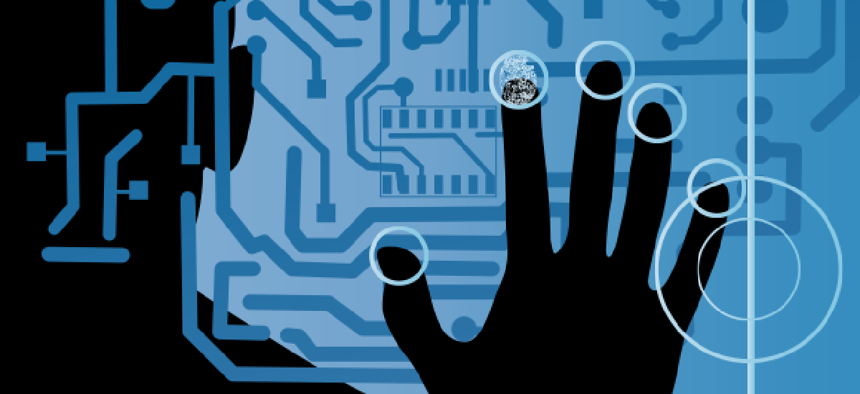Army leans into biometric ID

The Army uses a mix of web-based biometrics tools to help identify people who may pose a threat to the Defense Department missions.
In 2004, the military started deploying iris and fingerprint scanners to units in Iraq to help troops verify local day workers, monitor detainees and protect bases from unauthorized personnel. Now, the Army uses a mix of web-based biometrics tools to help identify people who may pose a threat to the DOD's missions.
"The Army employs biometrics systems in operations to support force protection, physical access needs, other operations, but largely it's been fingerprint based," said Keith Riser, a computer scientist for the Intelligence and Information Warfare Directorate at the C5ISR Center in Aberdeen Proving Grounds, Md.
The Army's C5ISR Center, however, has been implementing two face and voice recognition programs— Video Identification, Collection and Exploitation (VICE) and Voice Identity Biometric Exploitation Services (VIBES).
In the past year, VICE has been able to create about 25,000 biometric records, process hundreds of watchlist matches, facially template thousands of individuals, and voice-print hundreds of "unpictured, unvoiced ISIS fighters" and other actors, Riser said.
The system uses a modular architecture that is then integrated into a user interface for analysts, who take the data and match it against data from DOD's releasable Biometrically-Enabled Watchlists or Automated Biometrics Identification System.
The system has enabled U.S. Central Command to spot "a suspicious person of interest at a training event who was filming with their cell phone," determine that the individual had a previous biometric enrollment and nominate them to be put on a watchlist and denied access to the event, Riser said.
Another example involved identifying and reporting a senior Iraqi military officer who had been suspected of terrorism. "Once we make that linkage, we're able to have that person be nominated to watchlists and whatever action needs to be taken," Riser said.
Since July 2018, CENTCOM, which operates in North Africa, the Middle East, and Central and South Asia, has been using the tech to wrangle the "growing database" of individuals in areas of operation using publicly available information. Some of that media comes from internet sources, such as publicly facing websites and "other forensic media that's been collected," he said.
"I don't want to make this sound like we're going out there and scraping the internet because that's a huge problem in its own right. That's not really what we are. We're a face-matching system, providing the analyst a way to match faces against media that they have," Riser said. "You might not always be able to [collect] a fingerprint but this way we can check against the face."
But the rise of deep fakes does raise concerns for the Army. "As we're collecting data, the potential for those images that we received to be a deep fake is becoming more and more of a possibility," Riser said. "In some of our analysis, it's something that we've identified that we want to pursue more. Right now, when we have data against the watchlist we have pretty good confidence that it's not."
In the next two years or so, C5ISR wants to make VICE/VIBES a program of record. Decisions that determine whether that will happen will begin to take place in early 2020, Riser said.
The present focus, however, is on improving the Biometric Examination Services workflow that "allows analysts to have a more accurate first pass on facial recognition," he said.
Riser said he personally thinks the systems' "capabilities will be able to persist and grow throughout the DOD and agency" and wants to improve them, clean up data and make it more shareable with other DOD systems.
"We're just focusing on trying to make sure that any systems in DOD that need access to this information can obtain it," he said.
This article was first posted to FCW, a sibling site to GCN.
NEXT STORY: How to protect your agency from phishing






